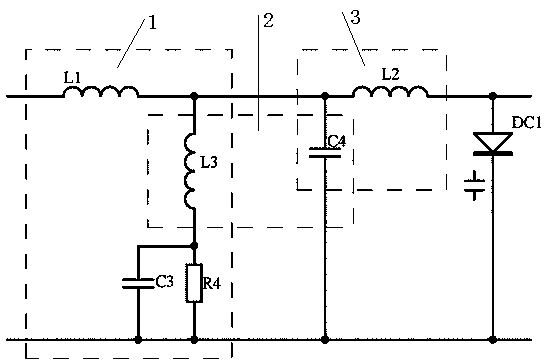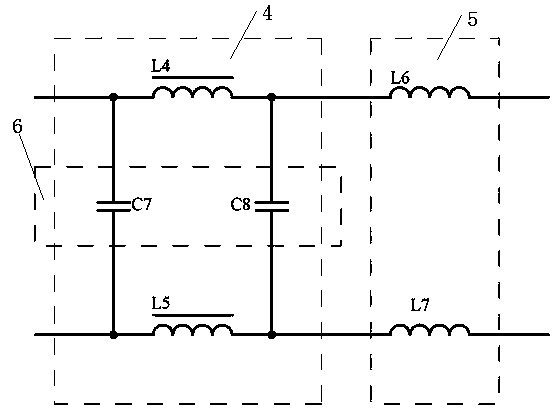a smart community
A community and smart technology, applied in the field of circuits, can solve the problems of poor anti-interference and stability, signal transmission attenuation, etc., to achieve accurate transmission, improve anti-interference and stability.
- Summary
- Abstract
- Description
- Claims
- Application Information
AI Technical Summary
Problems solved by technology
Method used
Image
Examples
Embodiment 1
[0017] Embodiment 1, a smart community requires the transmission of various signals in the smart community, such as analog or digital electrical signals such as video signals, sound signals, and power signals in the smart community, that is, modulated signals. All need the corresponding collector to collect, after the signal processing circuit is processed, the transmitter sends the control terminal of the smart community. The signal processing circuit is for short-to-medium distance transmission, so the signal processing circuit is designed with frequency modulation circuit, signal amplification circuit and filter circuit. The frequency modulation circuit receives the signal at the signal input terminal, modulates the signal to a high frequency, and then the signal amplification circuit increases the amplitude of the signal, and finally the filter circuit filters and stabilizes the voltage and outputs it to the transmitter from the signal output terminal;
[0018] The frequenc...
Embodiment 2
[0019] Embodiment 2, on the basis of Embodiment 1, the filter circuit is used for the parasitic interference in the frequency modulation process and the interference of external random noise, and the differential mode anti-interference circuit 4 is connected in parallel by a circuit composed of a capacitor C7 and a voltage transformer L5 in series The loop composed of voltage transformer L4 and capacitor C8 connected in series improves the differential mode anti-interference ability of the signal. The differential mode filter circuit 6 is composed of capacitor C7 and capacitor C8, which is used to filter out differential mode interference. The common mode filter circuit 5 is composed of inductors L6 and L7 are connected in parallel. The inductance presents an inductance to the common mode between the external random noise and the ground, and effectively absorbs the common mode interference. Finally, after the voltage regulator diode DZ1 is reversed and stabilized, the final proc...
Embodiment 3
[0020] Embodiment 3, on the basis of Embodiment 1 or 3, the frequency modulation circuit is used to modulate the signal at the signal input end into a high-frequency signal. Specifically, the analog or digital electrical signal at the signal input end is coupled through capacitor C1, resistor The R1 bias is added to the base of the transistor Q1, and the emitter of the transistor Q1 is respectively connected to one end of the bypass capacitor C2 and one end of the emitter resistor R2 for amplification, and the output from the collector of the transistor Q1 is connected to the first resonant circuit 1 The resonant frequency is generated and modulated into a high-frequency signal, and any parameter in the first resonant circuit 1 can be changed to adjust the resonant frequency, that is, to adjust the frequency of the high-frequency signal.
PUM
 Login to View More
Login to View More Abstract
Description
Claims
Application Information
 Login to View More
Login to View More - R&D
- Intellectual Property
- Life Sciences
- Materials
- Tech Scout
- Unparalleled Data Quality
- Higher Quality Content
- 60% Fewer Hallucinations
Browse by: Latest US Patents, China's latest patents, Technical Efficacy Thesaurus, Application Domain, Technology Topic, Popular Technical Reports.
© 2025 PatSnap. All rights reserved.Legal|Privacy policy|Modern Slavery Act Transparency Statement|Sitemap|About US| Contact US: help@patsnap.com



